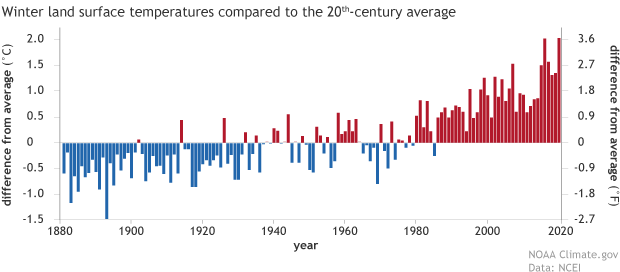The future of tourism will not be defined by COVID-19.
Sure, in the short term, it defines everything. Every lockdown. Every partial reopening. Every air corridor or quarantine. But COVID-19 is an event. It is a storm. A terrible storm, one seemingly without end, and one we need to respond to immediately. But it will pass. We will be looking back at it.
COVID-19 is not even the only terrible storm-like event of 2020. Bushfires raged across Australia at the beginning of the year. Siberia saw temperatures of 38 degrees inside the Arctic Circle, causing wildfires, loss of permafrost, and an invasion of pests. The locust storms currently affecting East Africa have been the worst for 70 years, with one storm reported to be 25 miles long by 37 miles wide, with up to 80 million locusts in each half a square mile. Over a third of Bangladesh is underwater right now due to ongoing floods…
These are all events. They will all pass. And there will be more events this year, and next. Although we must respond to each event in turn, we also need to stop seeing them as unrelated, treating each one as a unique aberration that knocks us off course. We need to stop thinking we can tackle them as isolated events and then get back to normal. We need to stop trying to swat every individual locust, and start addressing what made the storm so bad.
Because these events are the course. They are the new normal.
Globally, 2020 has seen the hottest January ever. The second hottest February. The second hottest March. The second hottest April. The equal hottest May. The third hottest June.
Put together, the chart of our course looks like this:

“We’re standing at a climate crossroads: the world has already warmed 1.1°C since the Industrial Revolution,” wrote Justin Worland in Time magazine in July. “If we pass 2°C, we risk hitting one or more major tipping points, where the effects of climate change go from advancing gradually to changing dramatically overnight, reshaping the planet. To ensure that we don’t pass that threshold, we need to cut emissions in half by 2030.”
Cut emissions in half by 2030. This is what defines the future of tourism. Not what tourism looks like in 2020, but what it needs to look like in ten years time. What does your part in the provision of holidays become when viewed through that challenge? What does your company or destination do in 2030? And what is your plan for getting there?
Cut emissions in half by 2030 should be the line against which every action is sense-checked. Every action we take today, for the rest of 2020, and every year until 2030. Does my choice take us closer to achieving these emissions reductions, or further away? Is this really a recovery, or am I actually making things worse? Will, for example, the $123 billion in state support already committed from governments to airlines in recent months move us in the right direction?
Everything should be viewed in this context. This is how we need to look at individual ‘events’, and also the longer term goal of creating a Carbon Neutral world by 2050. Because if we haven’t cut emissions in half by 2030 then there is almost no way we will be Carbon Neutral by 2050. And even if we are, it won’t be an achievement to celebrate, as the damage done in the next decade will mean that while we might finally reach neutrality by that year, we will have already warmed the world too far in the meantime.
Or to once again use the frame of our current terrible event: Which countries are doing better now? The ones who acted fast and early, even when their response seemed disproportionate? Or the ones who put off action because they thought those calling for it were being ‘alarmist’ and they wanted to protect their economies?
Even my focussing on the need to cut emissions in half by 2030 risks instilling a lack of urgency. 10 years is a long time. So how about cut emissions by over 7% every year? Because that’s what achieving the 2030 goal demands.
“Our collective failure to act early and hard on climate change means we now must deliver deep cuts to emissions – over 7 per cent each year, if we break it down evenly over the next decade,” said Inger Andersen, UNEP’s Executive Director at the end of last year. “This shows that countries simply cannot wait until the end of 2020, when new climate commitments are due, to step up action. They – and every city, region, business and individual – need to act now.”
Andersen said these words at the end of 2019, before COVID-19 was even on most of the world’s radar.
We are now past half way through 2020. And now, since everything is viewed through the frame of COVID, consider this: even with the ongoing shutdown of much of the global economy and most of international travel, what do you think the predicted carbon emissions reductions are for the whole of 2020?
According to a study in Nature Climate Change, they are 7%. The amount we need to cut every year from now on.
The future of tourism will not be defined by COVID. Or by what has happened in 2020. But they have given us a few clues as to the challenge that lies ahead.
NOTE: In January this year I co-founded a voluntary initiative, Tourism Declares a Climate Emergency. We now have 99 signatories, all committed to working together to align their operations with achieving global emission reductions of 55% by 2030. The more companies, individuals and destinations that come together to find and share the solutions we need, the better chance we have of achieving our aims.
You may also be interested in…
- Why is it essential for luxury travel and sustainability to have a harmonious future?
- Cancelled. Where must tourism travel next?
- How can destinations support domestic tourism?



Shoring up local economies and encouraging tourists to travel using sustainable methods is also essential. I feel the virtual tour will soon be not just a “thing” but a necessary alternative for those that cannot travel with near zero carbon methods